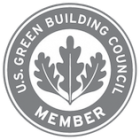7 tips for optimizing design of zero net energy buildings

February 28, 2019
In an increasingly environmentally conscious society, Zero Net Energy (ZNE) buildings has risen in popularity taking green building design and construction to new heights.
The ZNE space has increased 700% since 2012 . [1] AIA® has called for all new buildings to be carbon neutral by 2030. This goal, named Architecture 2030®, has been adopted by over 400 A/E/P firms [2]. Even some cities have adopted the challenge.
And recently, the U.S. Green Building Council launched LEED zero to address net zero carbon operations.
Clearly ZNE is not a fad. ZNE is solving a real problem to help the environment. So are you thinking of pursuing net zero? If so, here are some tips to consider.
- Plan for grid optimization. Solar and wind energy variability may only become more critical in the future. As a result, demand flexibility can take a higher priority. Having intelligent systems optimized for grid sensitivity can help. Reduce the amount of energy that the ZNE will have to draw from the grid during low solar intensity. With thermal energy storage, chillers can be completely shut off as needed to maximize building load flexibility. Think energy awareness and energy agility for better resiliency.
- Evaluate potential for energy cost savings. Energy pricing for commercial building customers can be extremely complex and often misunderstood. ZNEs relying on grid for back up generation can be subject to high demand charges. Know the effect of the demand charges then design the building to better manage them. Evaluate potential for renewable procurement and distributed energy storage resources for a balanced energy management plan that supports your building loads, geography, utility rates and local legislation.
- Address thermal loads first. To get to zero energy, controlling thermal loads is a must . Air-conditioning is the biggest, easiest load to shift. Never use a battery to run a compressor to instantaneously cool something. Instead, store the cooling the night before and save the battery for needs that can’t be stored. Afterall, just storing the cooling is much less expensive and more efficient than the storing electrons to create the cooling.
- Try a layered approach. A layered approach involving several technologies can help reduce demand as needed. Start with storing thermal loads. Then use batteries to power devices such as lights and computers and to smooth out short fluctuations in energy consumption. Use combinations of fans, outdoor air and window shading.
- Take a future ready approach. Give yourself some room for actual energy usage which tend to be higher than anticipated in the design or planning stage. Due to human behavior and future peak demand for new electricity loads such as electric vehicles, be prepared for future energy consumption. Consider room for future expansion. Install new smart controls and smart connected devices. Start programs to promote energy savings by tenants.
- Gain meaningful insights. Like the old adage says, you can’t manage what you don’t measure. Simple graphics can alert you if you’re at risk for going off course. To begin, check that you are measuring the predetermined performance metrics (energy consumption, carbon emissions, peak demand). Use metering to measure the building activity and energy consumption. You should be able to easily monitor and control energy usage. Use forecasting services for notification of potential peak demand events. Utilities may have coincident peak days so you’ll want to avoid heavy energy use on those days. Monitor that the storage is dispatched and that all efforts have been made to reduce peak demand. Finally, data visualization can show an important story behind the system’s performance.
- Rely on trusted partners. There are numerous start-ups and new technologies. Don’t be sold a bill of goods. Full service providers with decades of experience that can provide turnkey solutions can help save time and money and eliminate a lot of the complicated decision making. Have a partner who can provided the answers you need, detailed energy services, energy procurement and intelligent systems design.
